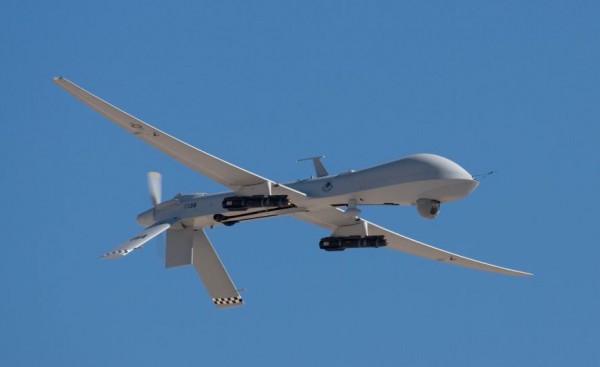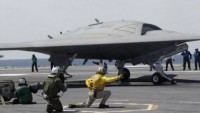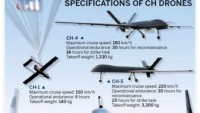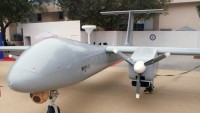US Air Force will Retire MQ-1 Predator Aerial Drones in 2018
| Arthur Dominic Villasanta | | Feb 25, 2017 07:58 AM EST |
(Photo : USAF) MQ-1 Predator with Hellfires.
The U.S. Air Force will begin inactivating its fleet of General Atomics MQ-1 Predator aerial drones in 2018.
This ubiquitous unmanned aerial vehicle (UAV) has been in service with the air force since 1995. It will be replaced in the many roles it currently performs by the more versatile and more heavily armed General Atomics MQ-9 Reaper aerial drone.
Like Us on Facebook
During its service, the MQ-1 first performed intelligence, surveillance, reconnaissance (ISR) missions for the air force, and later became an aerial assassin armed with four AGM-114 Hellfire missiles that took out Al Qaeda and ISIL militants, among others.
"Right now the plan is to stop flying the MQ-1 in 2018, and that means we need to get transitioned this year," said the air force in a statement.
The MQ-1 Predator is a remotely piloted aircraft system capable of 24-hour missions. The aircraft can loft a 204 kg payload; has a flight ceiling of 7,600 meters and can reach cruising speeds of 135 km/h.
On the other hand, the MQ-9 Reaper has a 1,700 kg payload capacity; a flight ceiling of 15,000 meters and a cruising speed of 370 km/h. The air force also said the more modern MQ-9 is better equipped, and has superior operational capabilities overall.
Since its first flight in July 1994, the MQ-1 series has accumulated over 1,000,000 flight hours. Together, the Reaper and the Predator remotely piloted aircraft reached 2,000,000 flight hours in October 2013.
The first overseas combat deployment for the Predator took place in the Balkans and lasted from July to November 1995 under the name Nomad Vigil.
Since that time, the Predator has seen combat in Afghanistan, Pakistan, the NATO intervention in Bosnia, Serbia, the Iraq War, Yemen, the Libyan civil war, the intervention in Syria and the intervention in Somalia.
The air force took delivery of its last MQ-1 Predator in March 2011.
TagsU.S. Air Force, General Atomics MQ-1 Predator, unmanned aerial vehicle, UAV, AGM-114 Hellfire missiles t, MQ-9 reaper
©2015 Chinatopix All rights reserved. Do not reproduce without permission
EDITOR'S PICKS
-

Did the Trump administration just announce plans for a trade war with ‘hostile’ China and Russia?
-

US Senate passes Taiwan travel bill slammed by China
-

As Yan Sihong’s family grieves, here are other Chinese students who went missing abroad. Some have never been found
-

Beijing blasts Western critics who ‘smear China’ with the term sharp power
-

China Envoy Seeks to Defuse Tensions With U.S. as a Trade War Brews
-

Singapore's Deputy PM Provides Bitcoin Vote of Confidence Amid China's Blanket Bans
-

China warns investors over risks in overseas virtual currency trading
-

Chinese government most trustworthy: survey
-

Kashima Antlers On Course For Back-To-Back Titles
MOST POPULAR
LATEST NEWS
Zhou Yongkang: China's Former Security Chief Sentenced to Life in Prison

China's former Chief of the Ministry of Public Security, Zhou Yongkang, has been given a life sentence after he was found guilty of abusing his office, bribery and deliberately ... Full Article
TRENDING STORY

China Pork Prices Expected to Stabilize As The Supplies Recover

Elephone P9000 Smartphone is now on Sale on Amazon India

There's a Big Chance Cliffhangers Won't Still Be Resolved When Grey's Anatomy Season 13 Returns

Supreme Court Ruled on Samsung vs Apple Dispute for Patent Infringement

Microsoft Surface Pro 5 Rumors and Release Date: What is the Latest?














